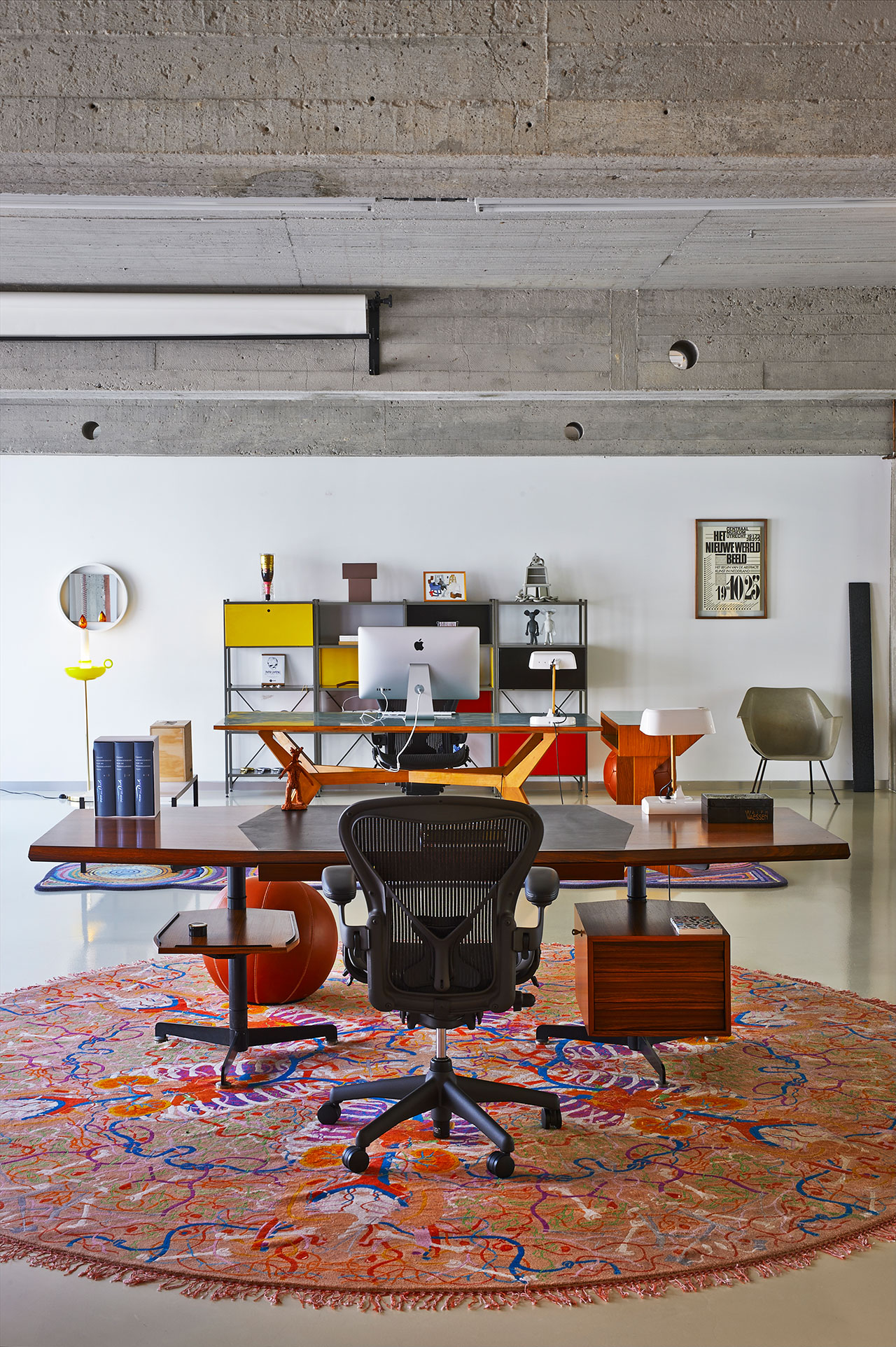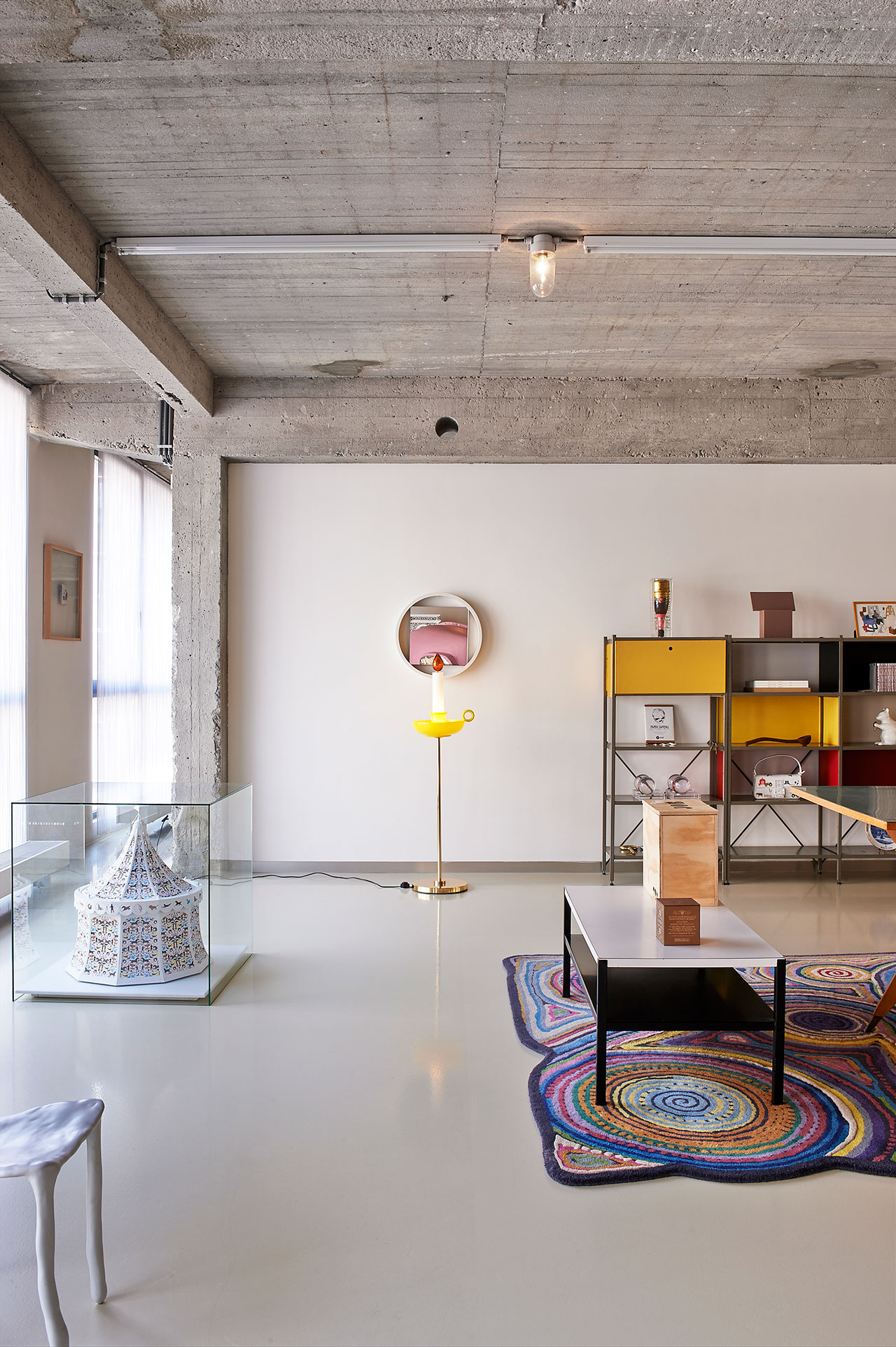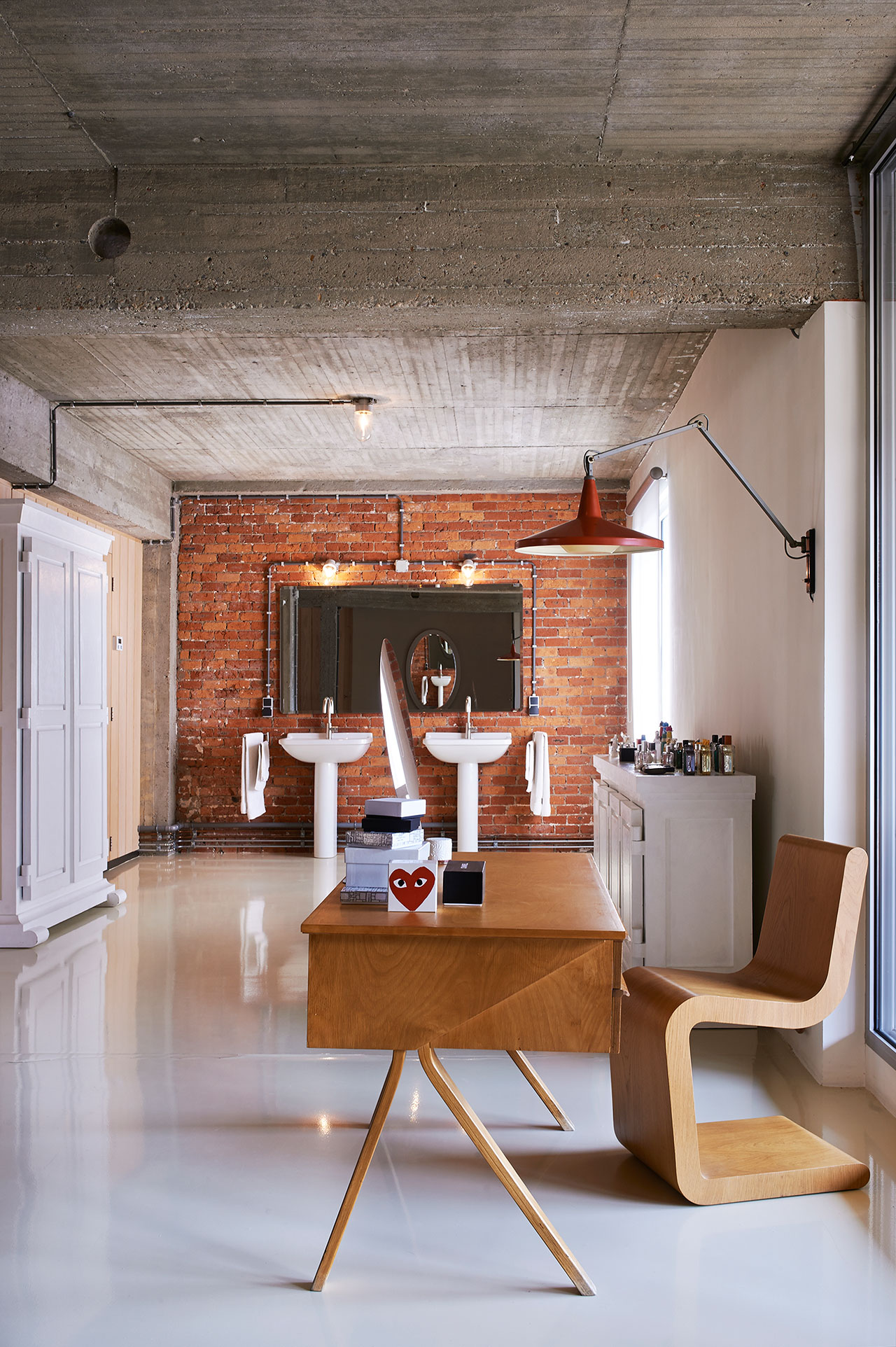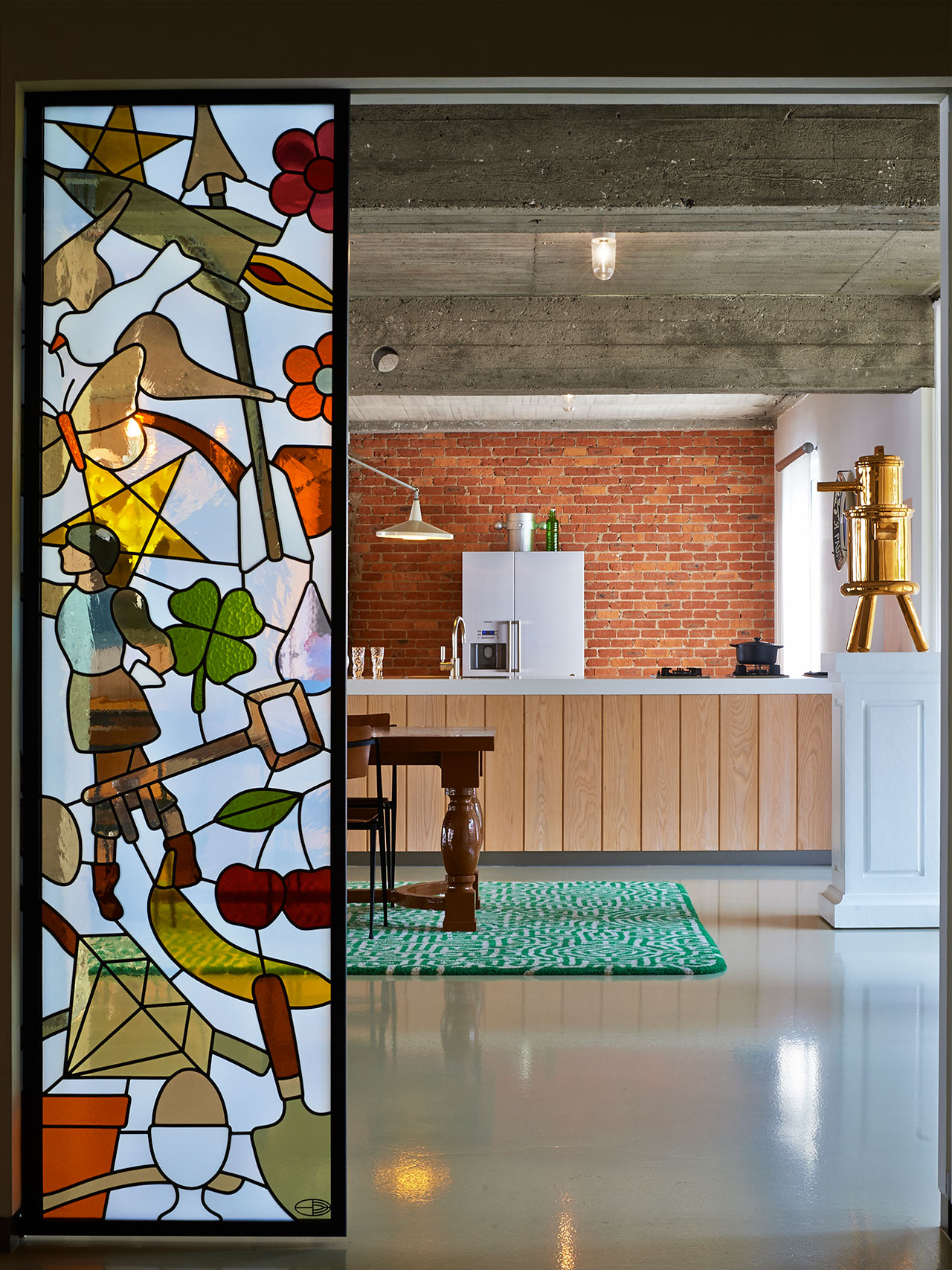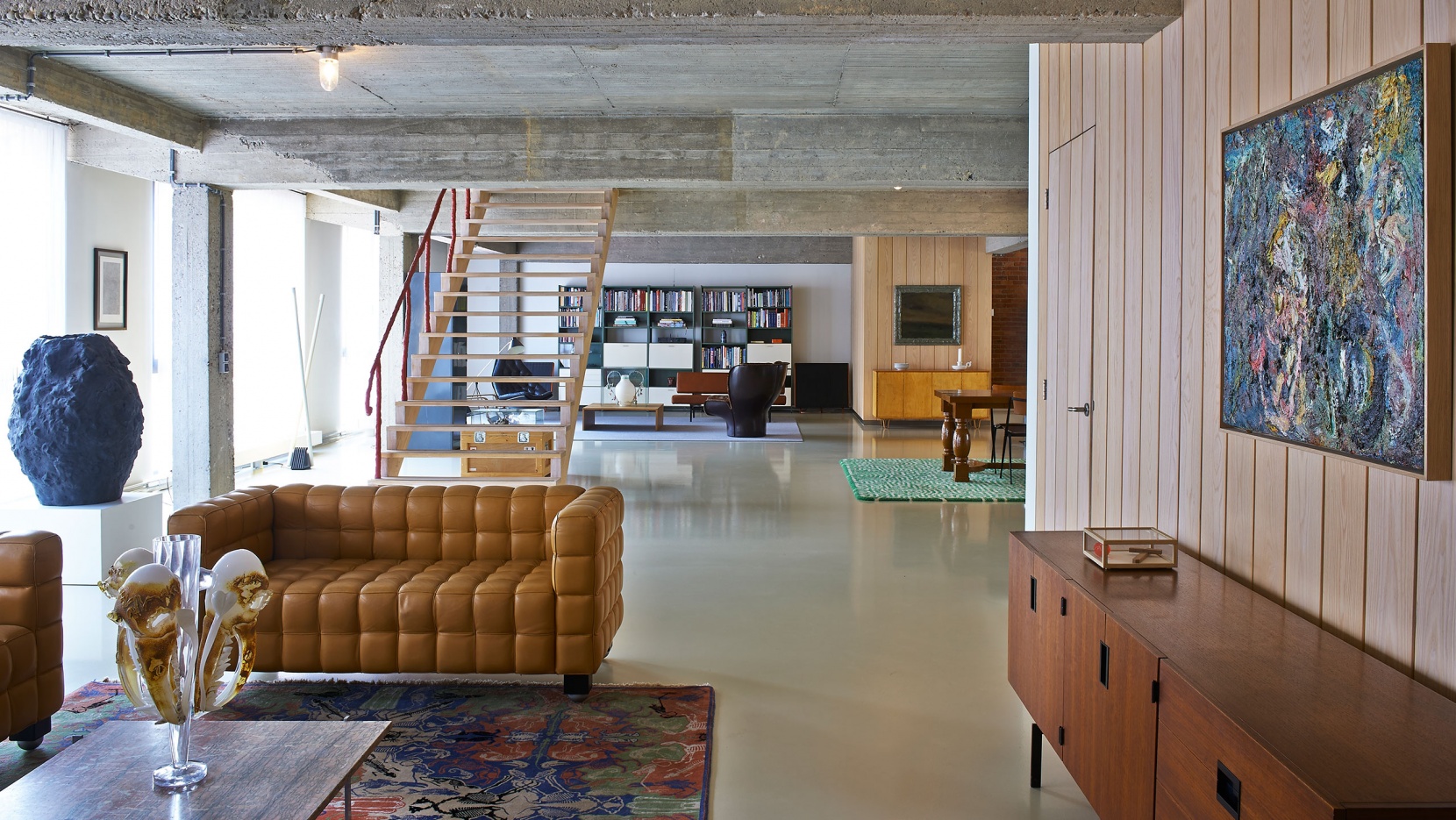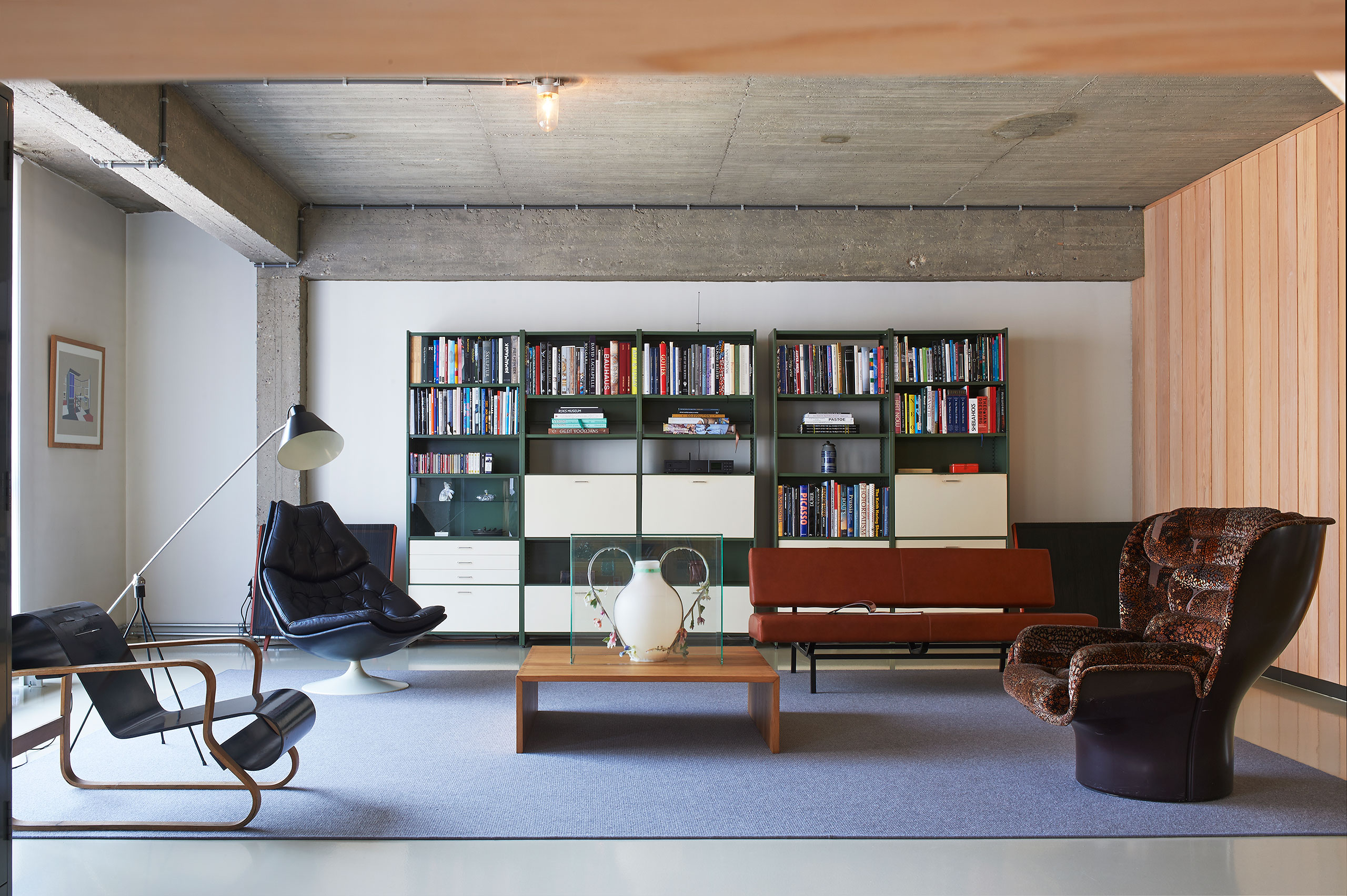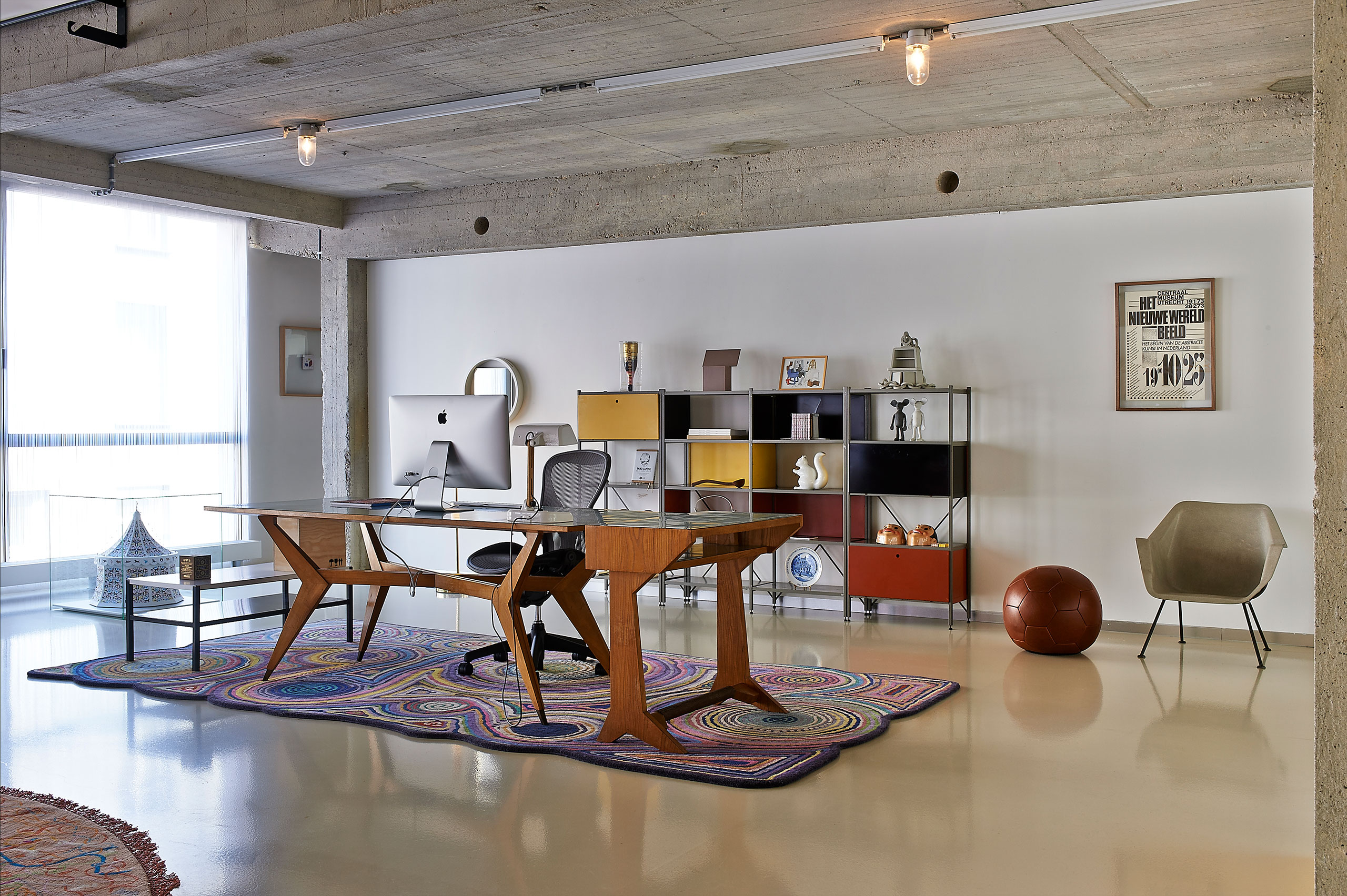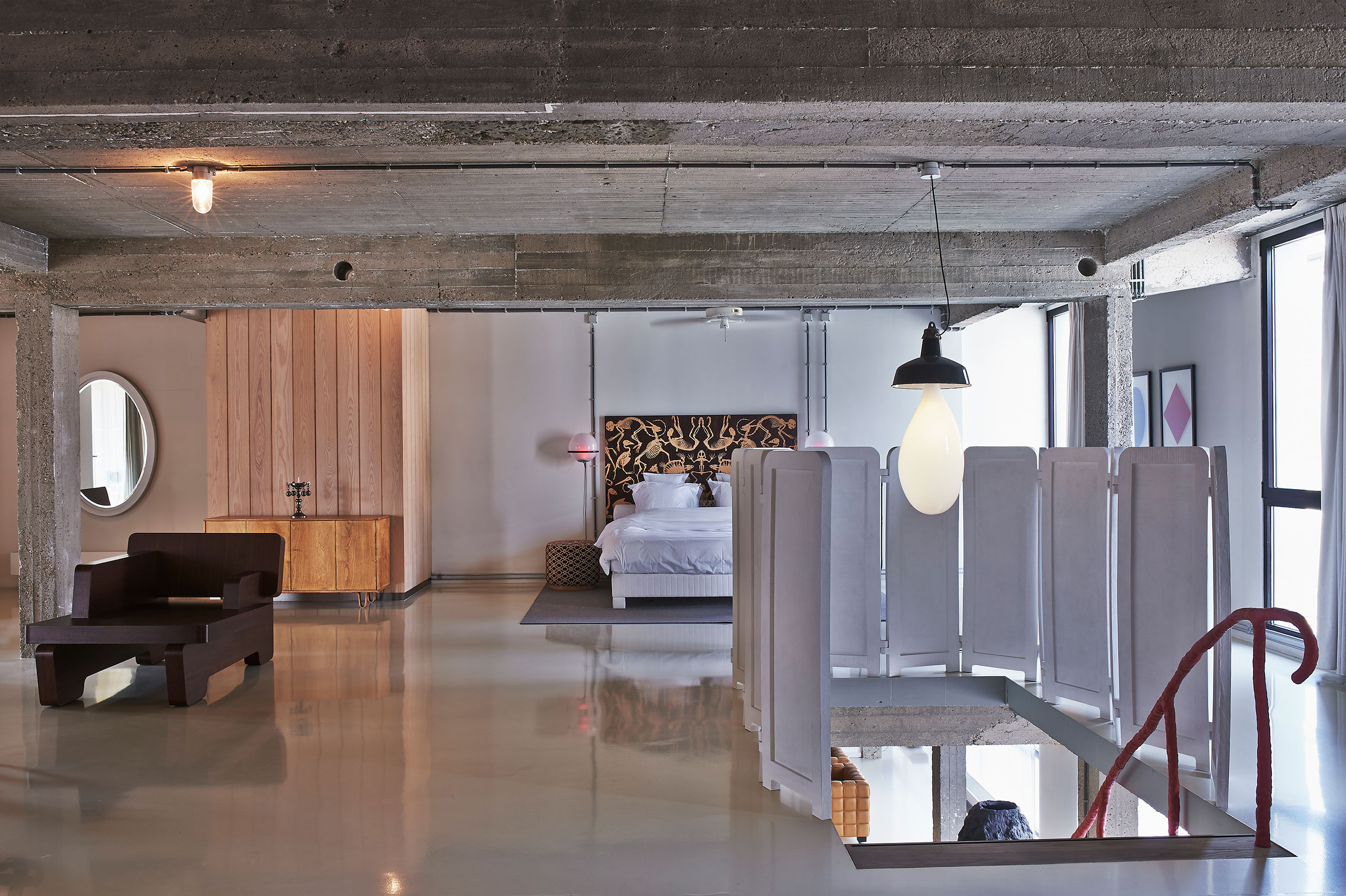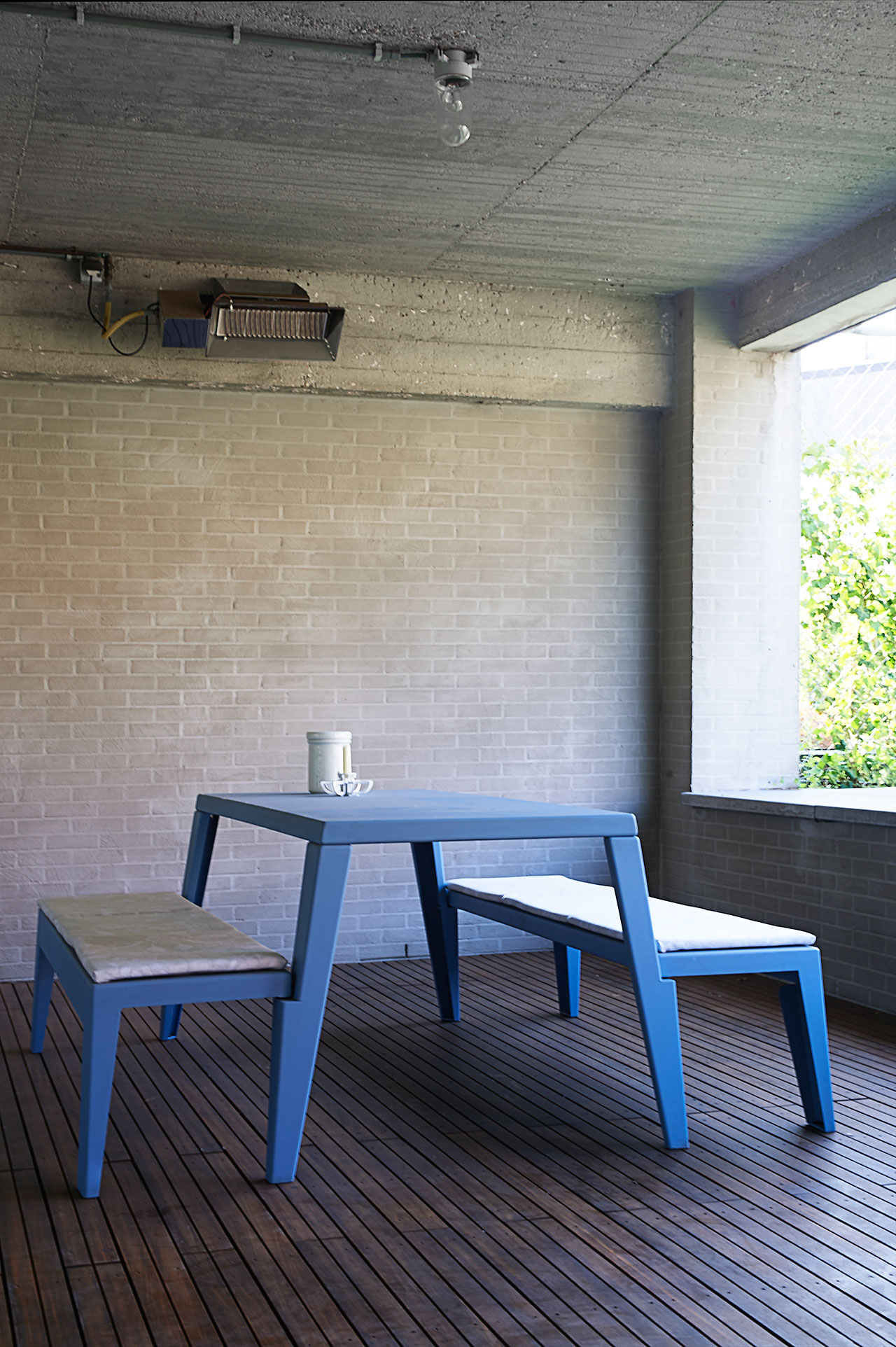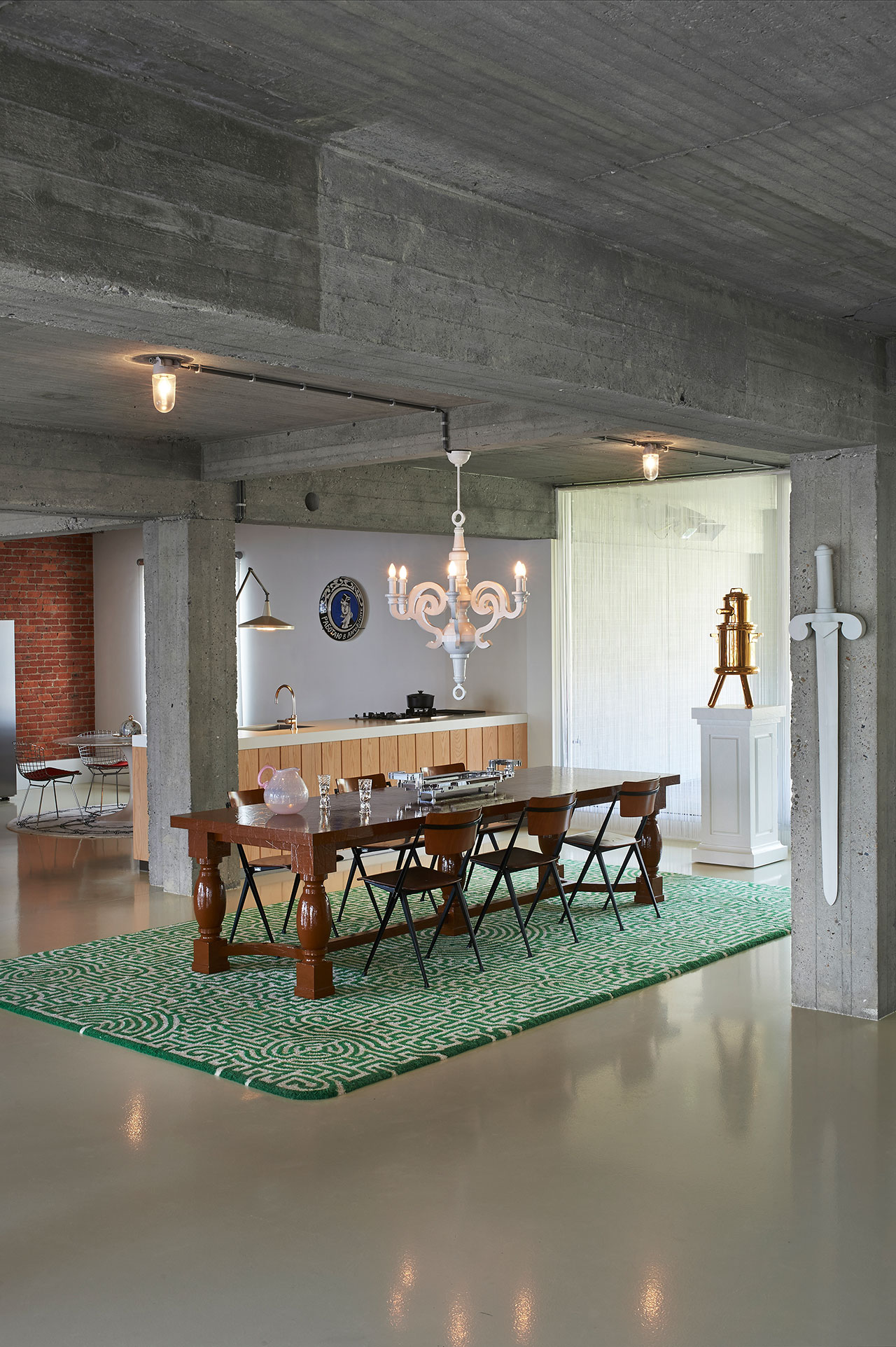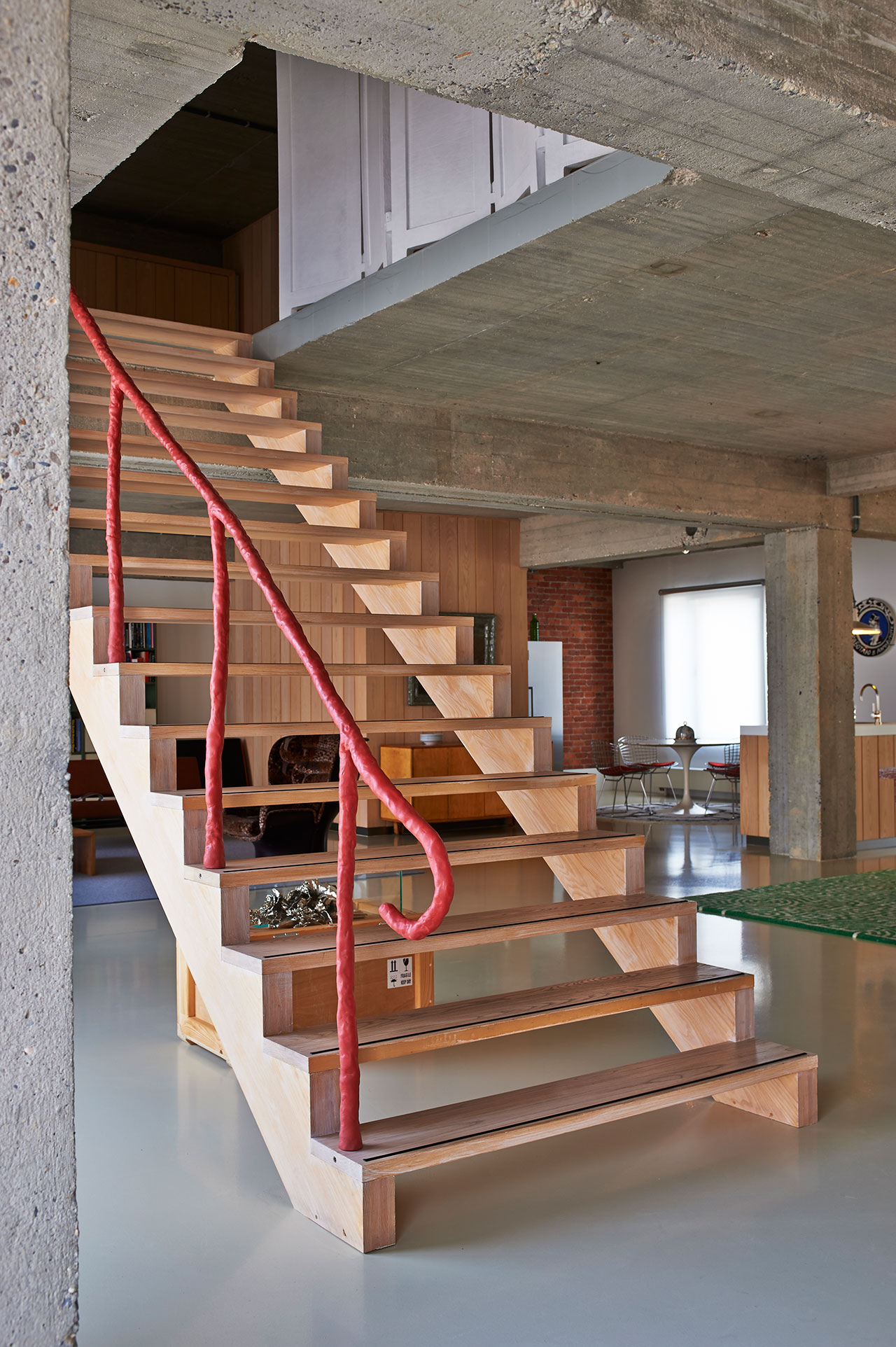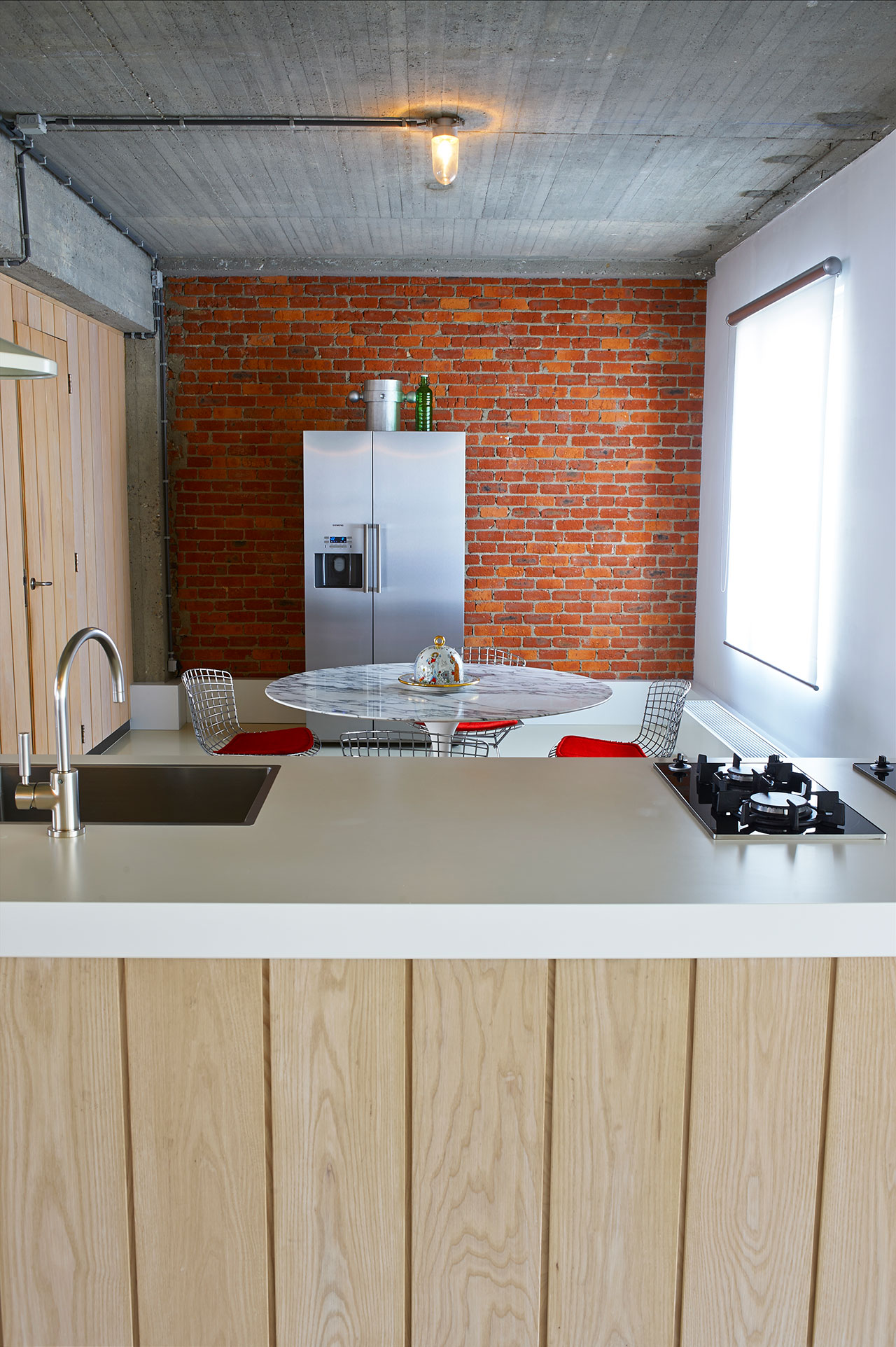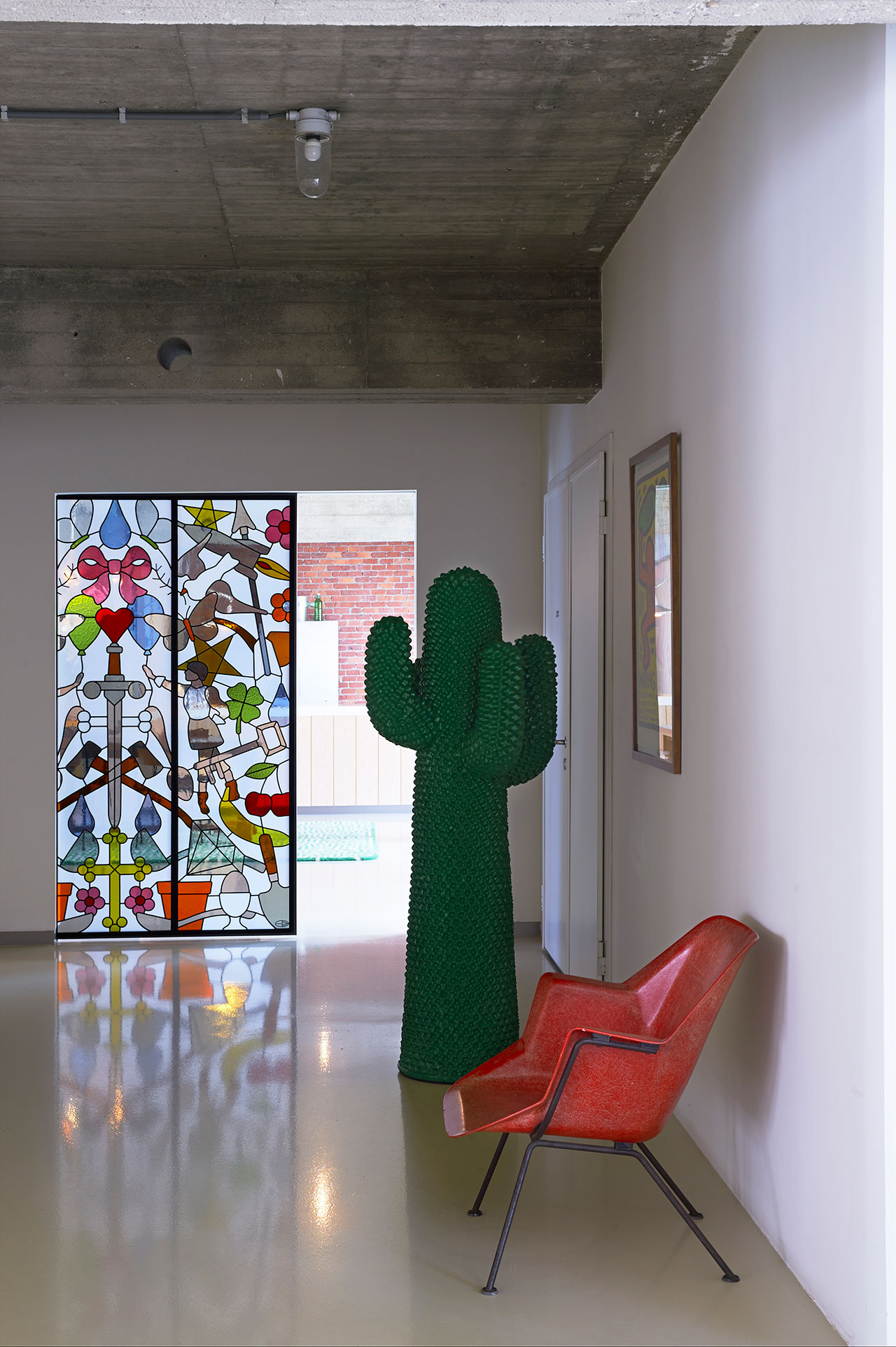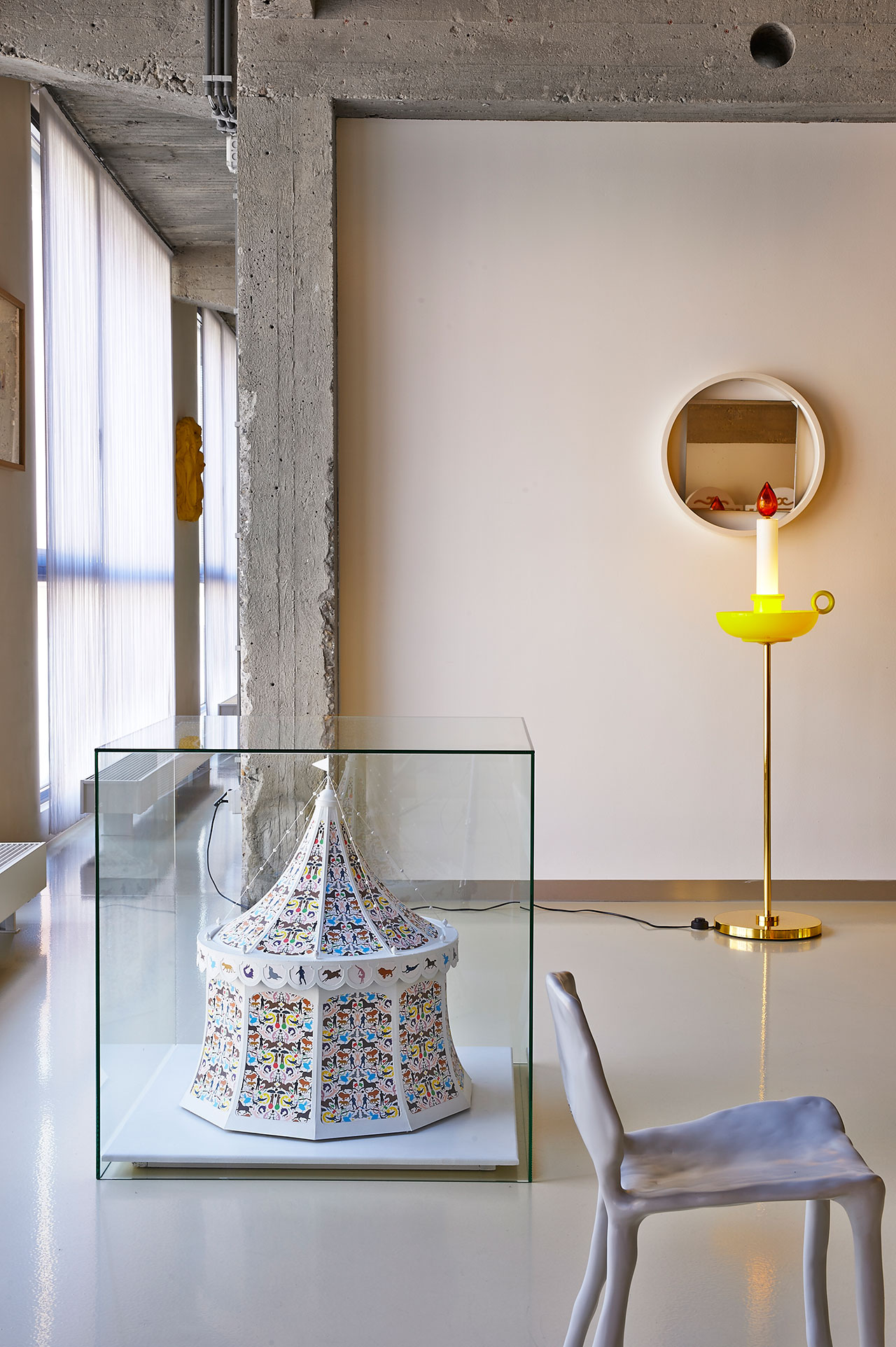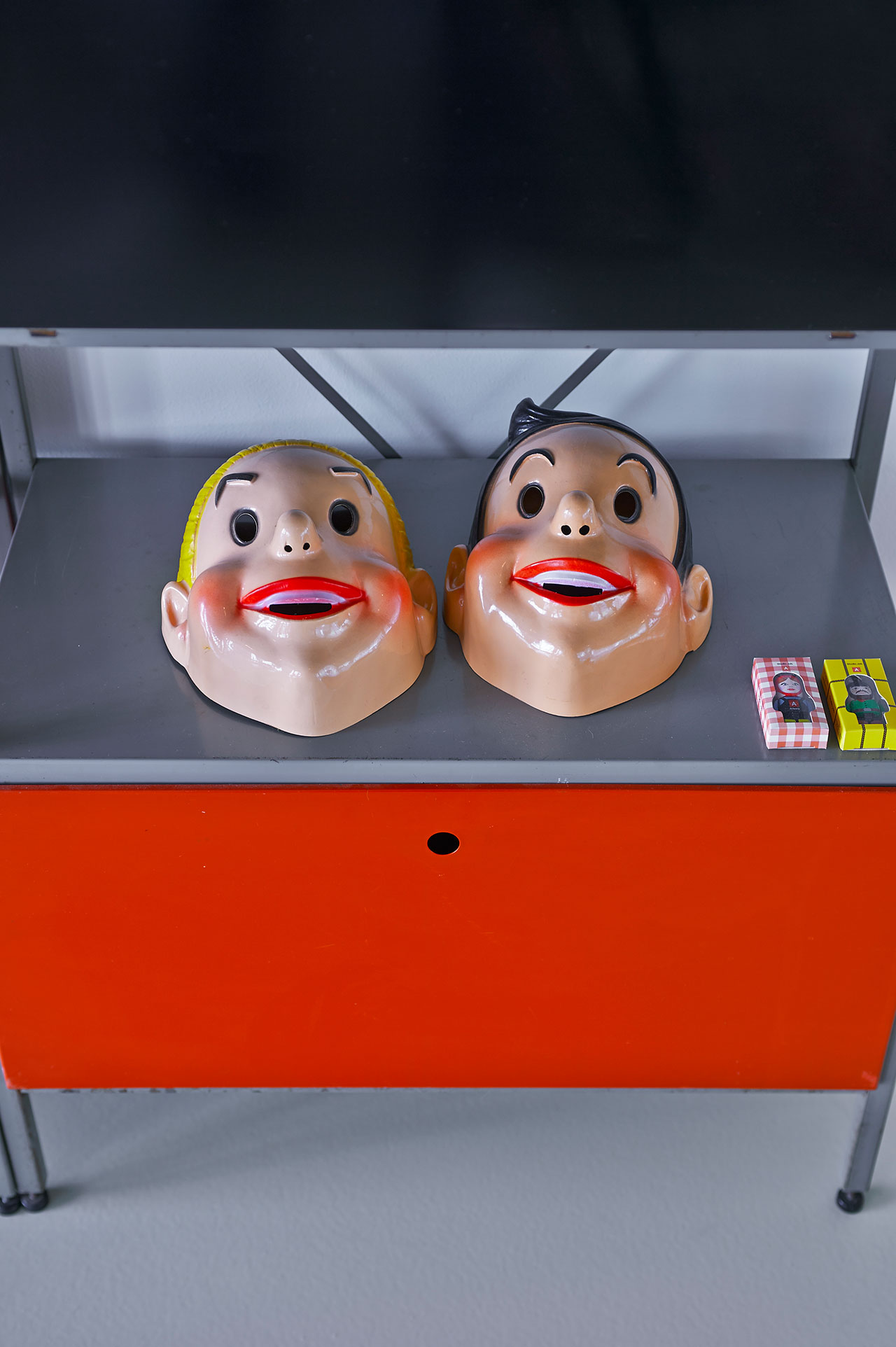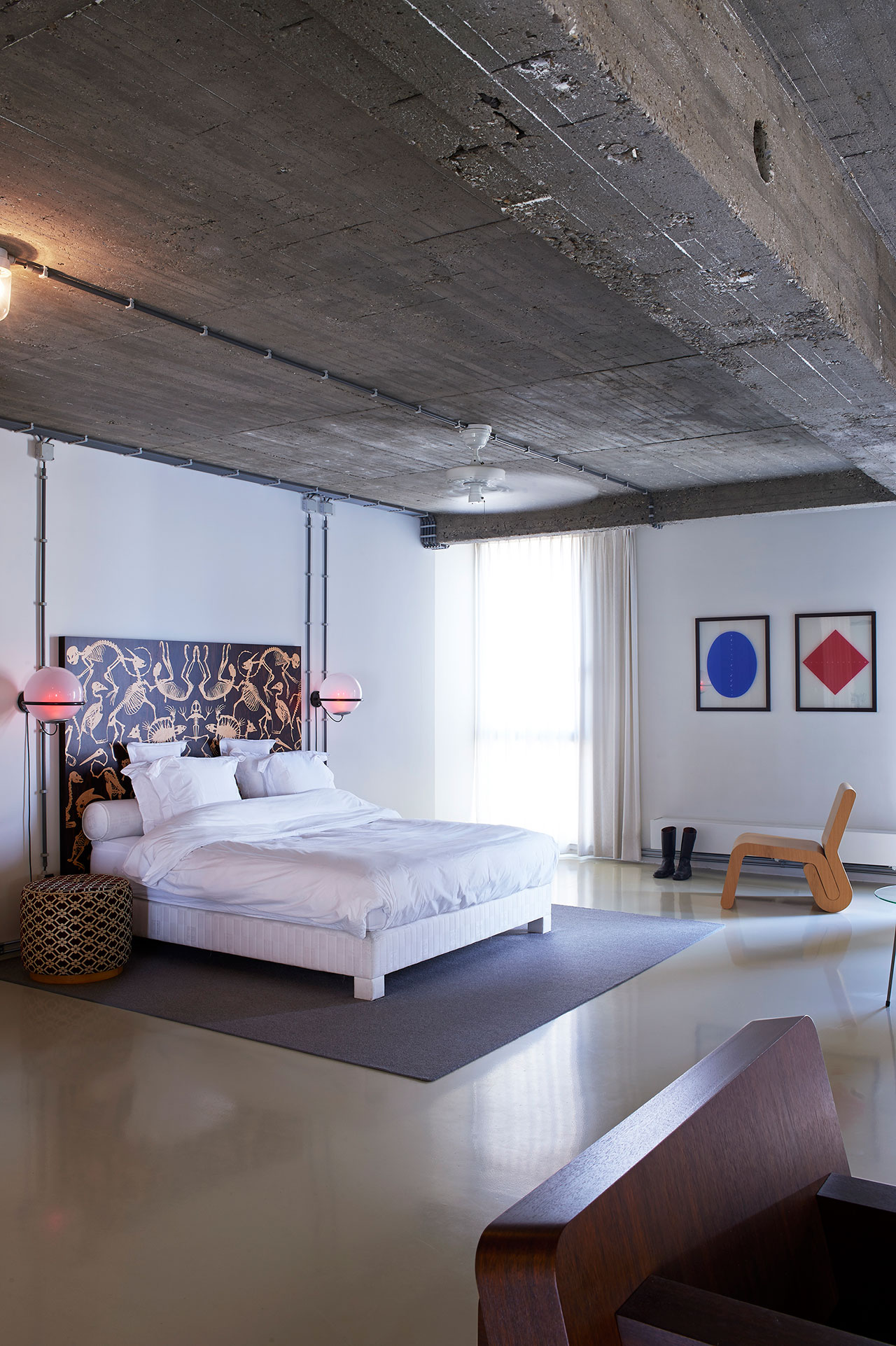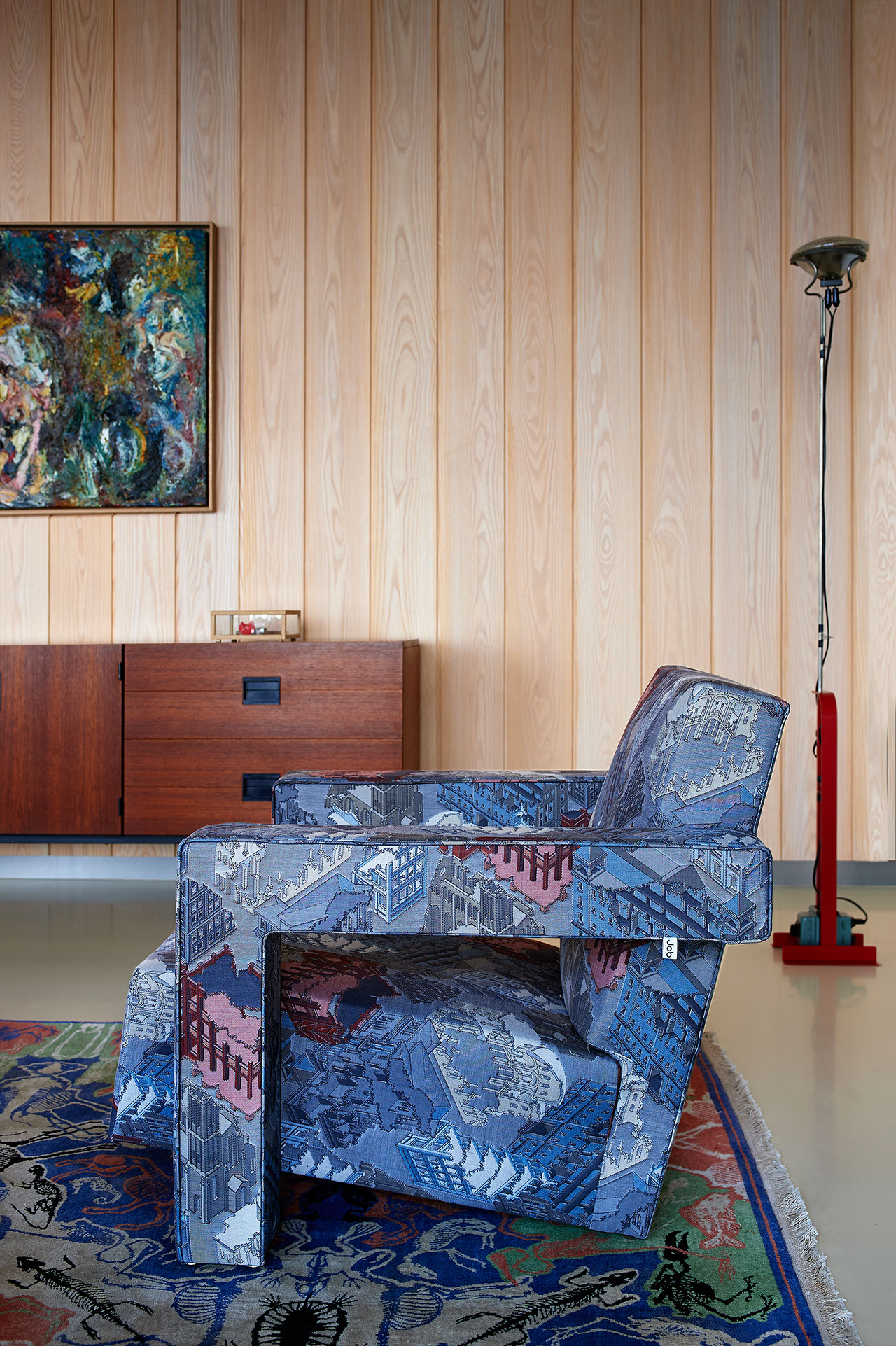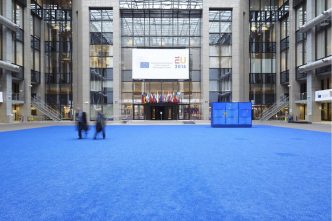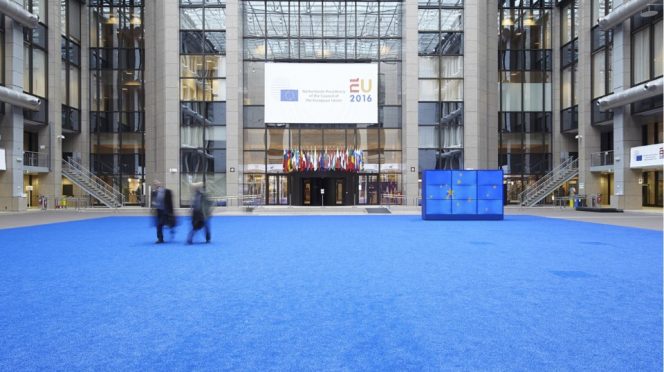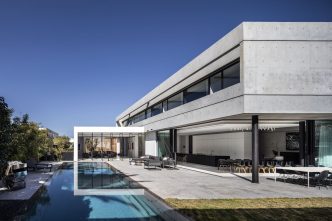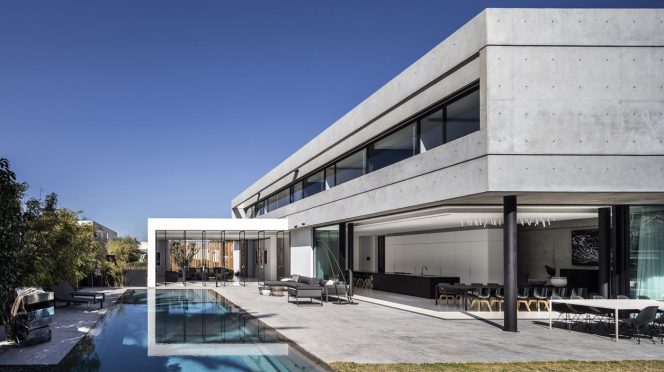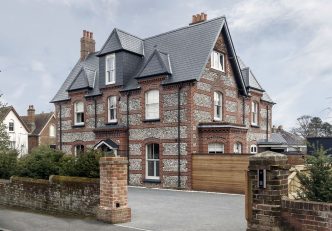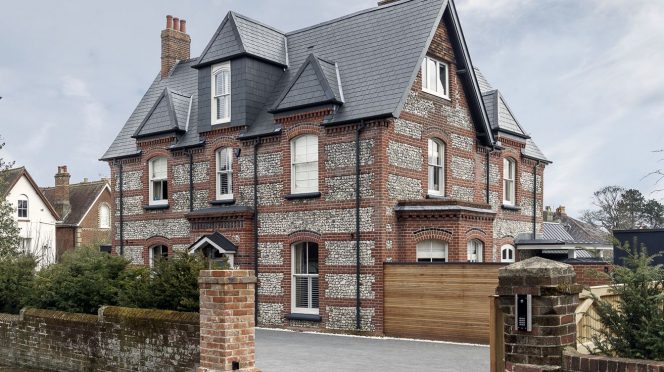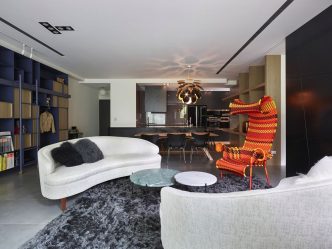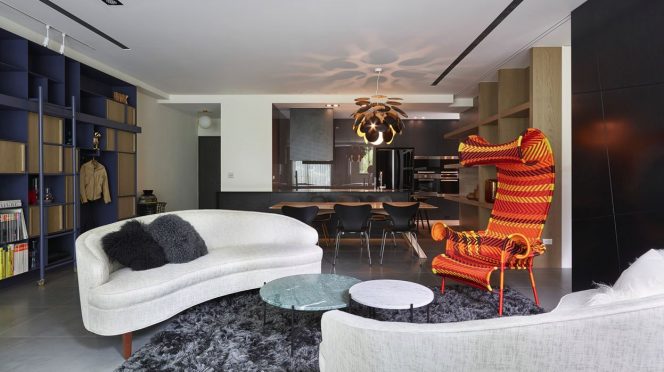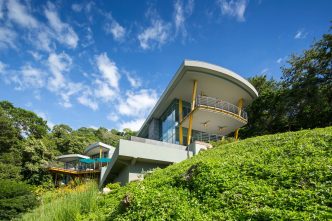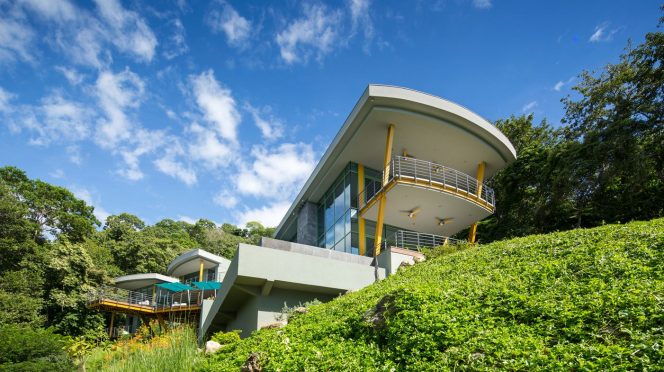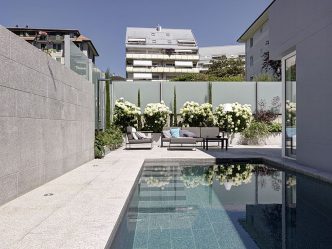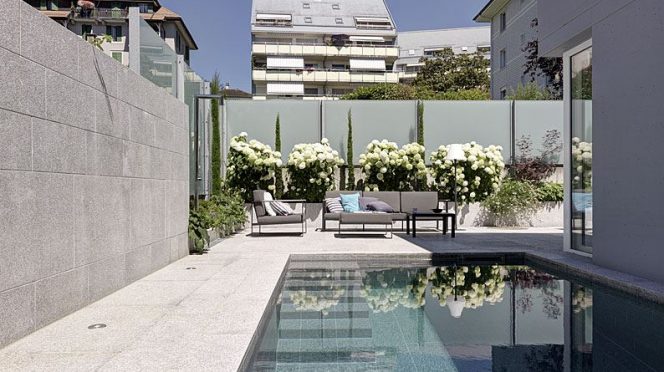Housed in a clinically renovated warehouse from the 50s, Job Smeets’ Antwerp working and living quarters contains a uniquely eclectic art and design collection, assembled throughout his years together with Nynke Tynagel, his partner behind Studio Job, the applied arts atelier known for its rich ornamentation and exquisite materials. Despite, or because of, the Studio’s extravagant aesthetic, the loft was conceived as a bare-bones bunker, “an objective canvas with pure materials” in Smeets’ words.
Located in a neighborhood of architects, artists and designers in the middle of the diamond district in central Antwerp —quite appropriate considering Studio Job’s artisanal work philosophy—the warehouse, which at one point also housed a school for the Orthodox-Jewish community, was chosen for its simplicity in form and its sturdy, concrete foundations, an advantage in a city full of canals. The building, completely renovated in 2008, was stripped down to its bare structure and opened up to create a single open space of 700 square meters spread across two floors. The no-frills approach to the interiors—exposed concrete, casted floors and raw wooden elements— which involved “no design” as Smeets poignantly explains, not only retains the authentic character of the building but also creates a neutral background to house the eclectically selected art and furniture. The only major intervention to be found are the stairs linking the communal areas on the lower floor with the bedroom above, a light-weight wooden structure with a sculptural, red handrail by Dutch designer Maarten Baas.
The loft is filled with an assortment of the designers’ beloved pieces of art and design, “curated” in a museum-like sensibility—though, as Smeets stresses, one strictly for private-viewing—with a particular preference for mid-century furniture from the 50s, which he considers “modernism in its purest form, when it was the most relevant”. Pieces like Eero Saarinen’s tulip table, Harry Bertoia’s Wire chair and Wim Rietveld’s modular cabinet are mixed with more funky pieces like Joe Colombo’s Elda sofa from the 60’s and contemporary elements like Gufram’s surrealist Cactus coat-stand, as well as earlier works like Jozef Hoffmann’s 1910 Kubus sofa and Rietveld’s Utrecht chair, upholstered with a fabric designed by Studio Job for Maharam. The collection also includes several samples of the decorative arts, including a glass vase by Czech glass artist Boris Sipek, a bronze urn by Dutch artist Armando and a hand-tufted carpet by Brazilian designers Campana Brothers, as well as a small selection of pictorial art such as graphic artworks by Lucio Fontana, Keith Haring posters and a painting by Flemish expressionist Constant Permeke.
As expected, several of Studio Job’s designs are also present throughout, from functional elements like the “Paper Chandelier” manufactured by Moooi, “Quack”, a hand-knotted round carpet produced by Nodus and “Chaise Longue”, a modular armchair, to more decorative works like “Perished”, a rosewood, maple and brass bed-headboard, veneered in a complex pattern of skeletons of extinct animals, and “Homework: Pinocchio”, a totemic cast-bronze sculpture on a wedge wood pedestal. The only item specially designed for the loft is the colorful, stained glass sliding door separating the kitchen from the rest of the living area, which depicts Smeets, Tynagel and The Sword—a heraldic motif that recurs in Studio Job’ work.
Rounding up this idiosyncratic abode is the roof garden, one of the biggest in Antwerp, which similarly to the interiors eschews elaborate landscaping—the designers admit they are not fond of gardening— for a simple layout, providing, as Smeets describes it, an outdoors space that “gives air and a place to hang”. Another reminder that Studio Job’s loft, more than being a contemporary treasure chamber, is above all a place to live and work.
